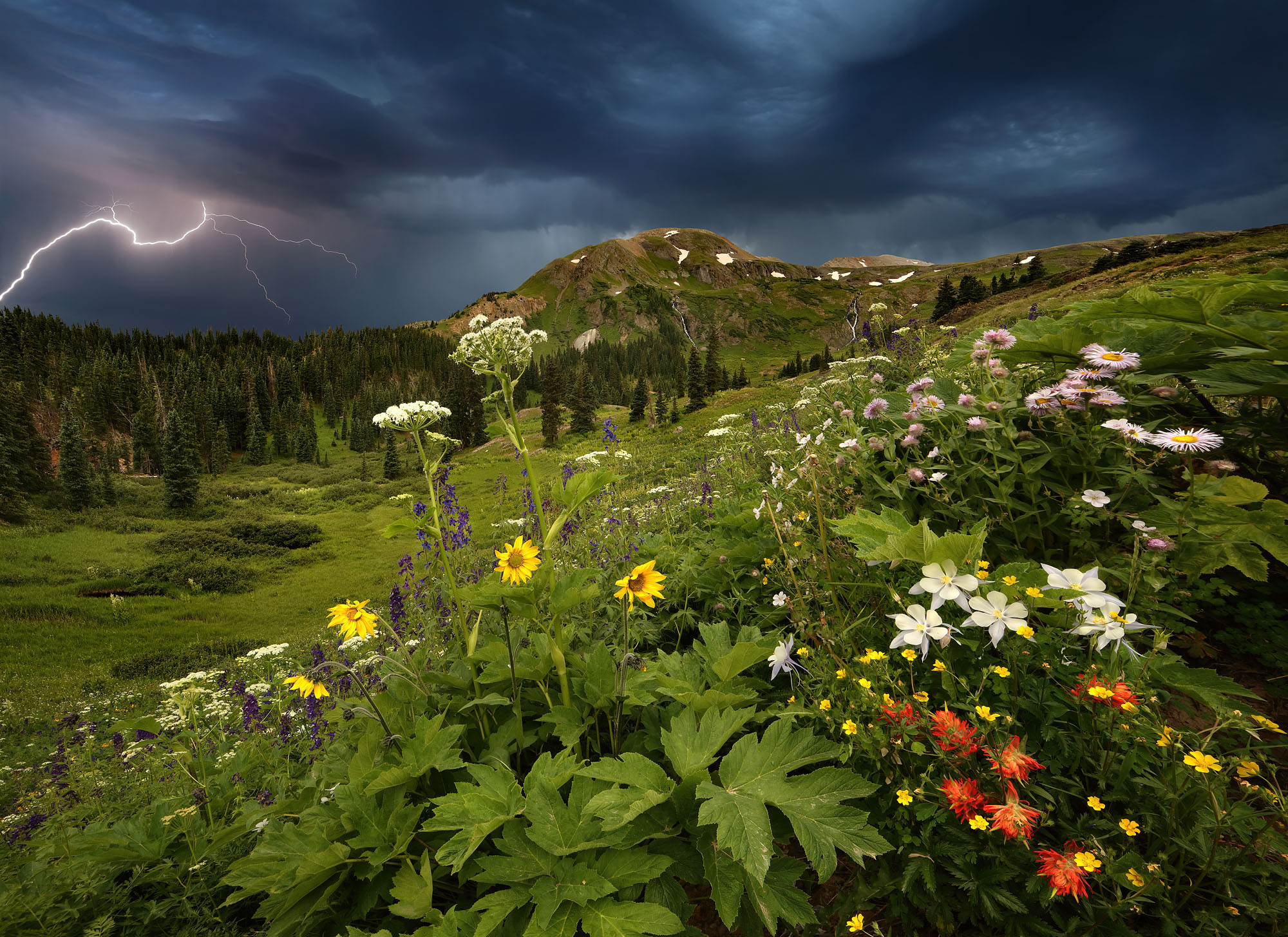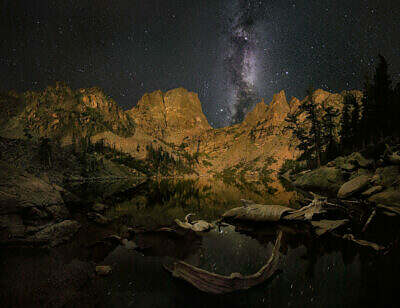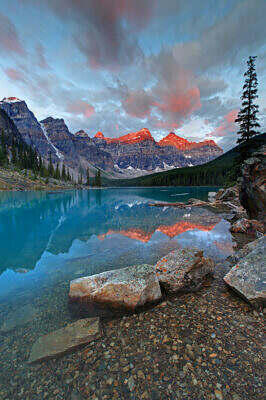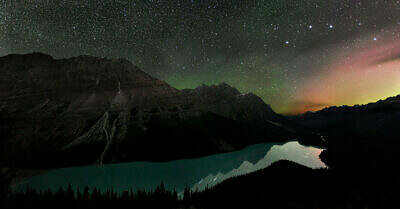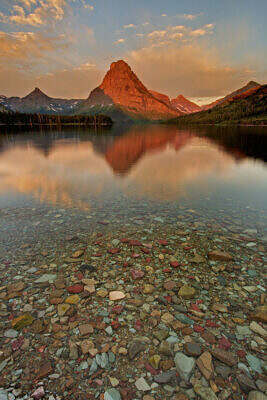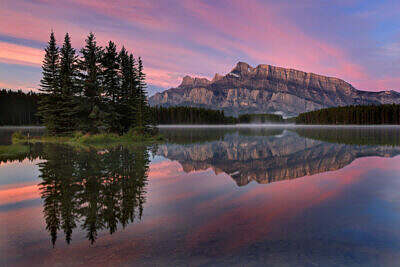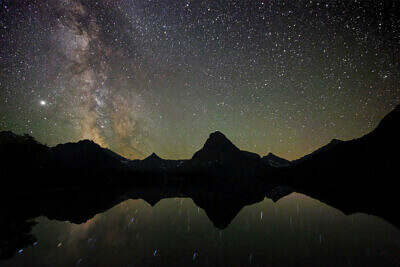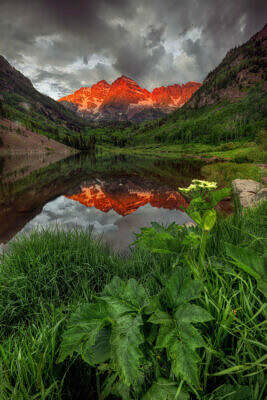A looming thunderstorm casts a magical light on the lush colorful wildflowers in the Rocky Mountains near Silverton in Colorado. From Red Mountain Pass, the view wanders across the swampy meadows of Mineral Creek uphill towards the Black Bear Mountains. The lightning bolt and the streaks of heavy rainfall end a three-week period during which the summer sun was constantly shining from a steel-blue sky.
Only one minute after this picture was taken, the rain set in and the lightning struck in the immediate vicinity. For a short time, even hail fell and finally it rained torrentially. The thunderstorm darkened the sky so much that the dawn became unnoticeable. For when the rain and rolling thunder finally cleared, it was already night and the stars were twinkling in the sky.
-
Stormy weather and wildflowers in the Colorado Rockies
Oh Be Joyful
- The Wild Embracing Silence
- Valley of the Ten Peaks
- Above and Beyond
- Ancient Shorelines
- Moments to Remember
- Grand Teton Skyline
- Patterns in the Void
- Only a Memory Remains

